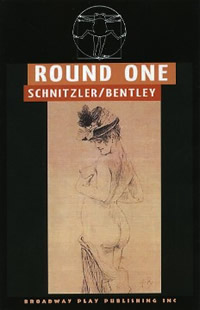Here are the images Keith shared with the group today. Below I have included (from my notes) the things Keith would like us to think about before our next meeting. Happy Pondering!
* How do we frame Reigen around what concerns us today?
* Think about what we identify as privileges vs.rights? Does this make sense to us?
*Think about the family unit. What does this mean today? How does our culture reflect this?
*What do we do to create facade?
* Where do we find fulfillment? What is selling out?
Reigen
A dramaturgical tool for CTE's 2011 production.
Monday, April 18, 2011
Monday, April 11, 2011
De L'Amour
Thursday, March 31, 2011
William Hogarth- "Before" and "After"
Keith wanted to bring these paintings by William Hogarth (c.1730's) to your attention. They are entitled "Before" and "After" which speaks to the before and after conversations which are present in the ten scenes of Reigen.
Keith also wanted to highlight this quote from a review by Joan Bunke, used in the article "The Reception of Arthur Schnitzler's Reigen" by Gerd K. Schneider:
"Vienna's glossy, phony veneer and the rot spreading under it were Schnitzler's targets. Ruta's production is too much corruption and too little veneer," (85).
Performance History and Images
 Attached is a PowerPoint (which you should be able to download to your own computer) that touches on the performance history or La Ronde. Images are from notable and recent productions as well as some film adaptations.
Attached is a PowerPoint (which you should be able to download to your own computer) that touches on the performance history or La Ronde. Images are from notable and recent productions as well as some film adaptations.PERFORMANCE HISTORY POWERPOINT
Round One/Round Two and Eric Bentley
Eric Bentley first translated and published Reigen in the 1950's and later published his same translation under the title: Round One in the 1980's. Round One became Bentley's inspiration for a similarly styled and themed piece set in 1970's New York City highlighting gay culture and relationships. In each play he included a preface which explores themes and ideas in Schnitzler's Reigen.
Pay close attention to the quote found on page xi:
Pay close attention to the quote found on page xi:
"The play opens with the encounter of Whore and Soldier. The latter is the most crudest character in the play, a man who has almost totally given up his humanity. Other people exist just to provide him with a physical release. Thus in the interplay of body and soul which is the life of this play and the characters in it, he stands at one extreme, and the Count in the last scene stands at the other. The Count is so intent on proving that the sould is more real than the body that he actually forgets he has had sex with the whore and fantasized about a conceivable relation, even with a whore (!), that is 'romantic', i.e. spiritual. Thus REIGEN has what most commentators seem to have denied it; a development of plot and theme from one extremity to another."
Schnitzler's Vienna- Map and Key
Here is a map and key which will aid in your understanding of the different locations and neighborhoods mentioned in Reigen.
FOLLOW THIS LINK FOR A CLOSER LOOK AT THIS MAP.
FOLLOW THIS LINK FOR A CLOSER LOOK AT THIS MAP.
Thursday, March 10, 2011
Süße Mädel
The Süße Mädel is a strictly Viennese term referring to a certain type/class of young woman at the turn of the century. She is a character that shows up in many of Schnitzler’s works including Reigen and in autobiographical accounts of his own life. Eric Bentley has translated this to ‘The Little Miss’ in his translation of Reigen and yet, it is more the understanding of the term that can get in the way for a modern audience as opposed to the literal translation. Below is an excerpt from the introduction of Schnitzler’s autobiography, My Youth in Vienna. Here Frederic Morton tried to capture the importance and the essence of the süße madel and how it reflects the overall themes within the work of Arthur Schnitzler.
“But, the most memorable Schnitzler character is das süße mädel, the Sweet Girl, who in one guise or another appears not only in these reminiscences but in Anatol, in Liebelei, and other plays frequently revived today. The Sweet Girl’s secret lies in her very vulnerability. Because of it she is no sooner bedded than betrayed. But because of it she also fascinates her betrayers—and us. In her willingness to be victimized there is an innocence and an odd strength, a dumb sensuous faith which none of her seducers can tap no matter how furiously they thrust themselves through her. For they, the smoothies, swingers before their time, are really the empties; they have given up on the world, while for the Sweet Girl the world continues sweetly—at least for a while. Such faith scrapes the jadedness off our nerve ends, it even attunes us, perversely, to the possibility of renewal.
At his best Schnitzler talked not just about old Vienna but about the aging of any culture; about the late, the very late, the maybe too late hour in search of dawn. Which may be our time of night right now”(xiv).
At his best Schnitzler talked not just about old Vienna but about the aging of any culture; about the late, the very late, the maybe too late hour in search of dawn. Which may be our time of night right now”(xiv).
Morton, Frederic. “Foreword.” in My youth in Vienna, by Arthur Schnitzler, x-xiv. New York: Holt, Rinehart and Winston, 1970.
Subscribe to:
Comments (Atom)










